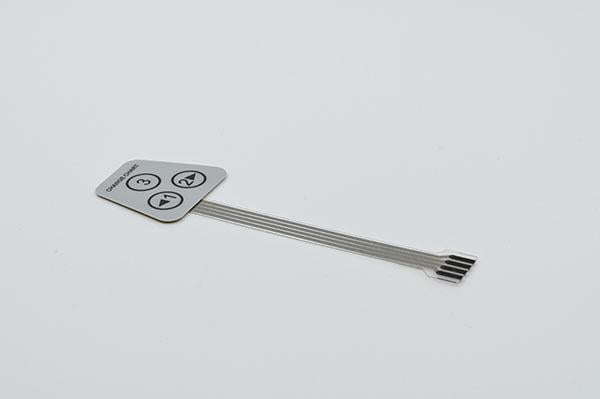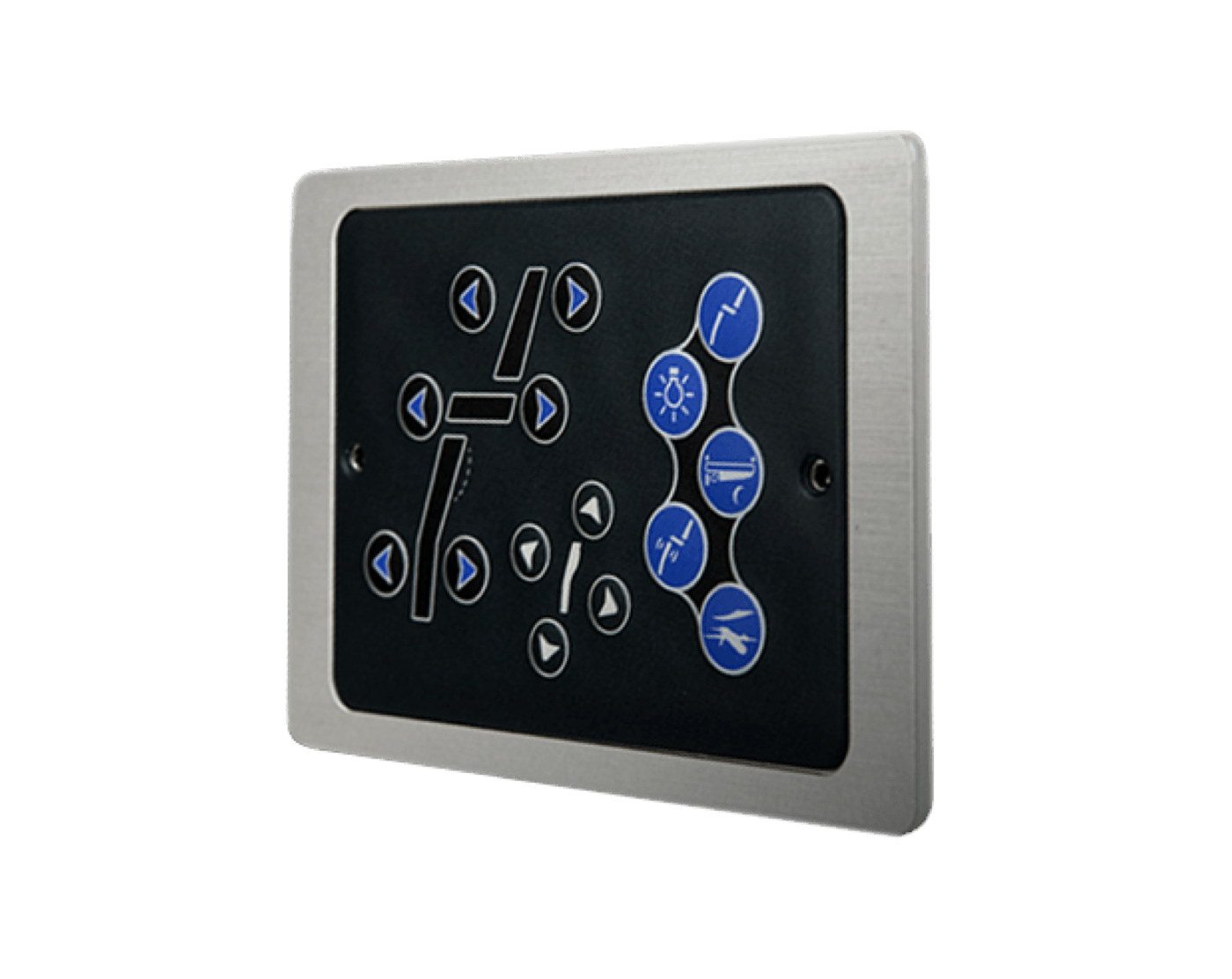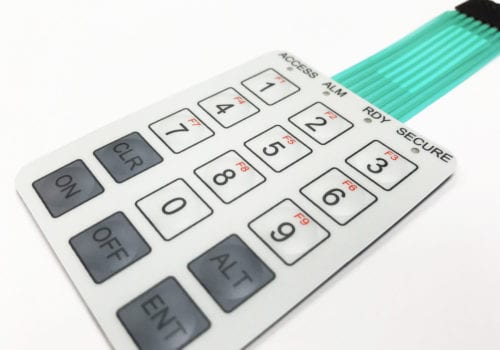Projects requiring accuracy should always involve a qualified membrane switch manufacturer from the start.
Projects requiring accuracy should always involve a qualified membrane switch manufacturer from the start.
Blog Article
All Regarding Membrane Layer Change: Understanding Its Design and Capability
When you consider the control interfaces in modern-day tools, membrane switches commonly enter your mind. These components are greater than simply switches; they blend design and functionality effortlessly. Recognizing just how they work and what makes them efficient can transform your perspective on everyday electronics. But, there are subtleties to their design and performance that you might not be conscious of. Let's explore what sets membrane switches over aside from other control systems.
What Are Membrane Switches?

Their smooth nature makes them easy to clean and immune to dust and wetness, an essential feature in many settings. Membrane buttons can also be tailored relating to form, dimension, and graphics, allowing producers to produce distinct user interfaces tailored to specific items. Plus, they're lightweight and thin, which aids in minimizing the overall mass of tools. Generally, membrane switches play a considerable role in enhancing individual experience across a wide array of applications.
Exactly How Membrane Layer Switches Over Job
When you push a key on a membrane layer button, it turns on an uncomplicated yet efficient system. membrane switch manufacturer. The leading layer, usually made of versatile product, pushes down onto a conductive layer underneath it.
You'll observe that the tactile comments varies based upon the switch layout, using either a soft click or a much more obvious response. When you launch the trick, the membrane returns to its original placement, resuming the circuit and stopping the signal. This process occurs virtually instantaneously, making certain a responsive individual experience.
Membrane layer switches are popular as a result of their resilience and resistance to dust and moisture, making them excellent for various applications, from house home appliances to medical devices. Comprehending this operation assists you value their widespread usage.
Secret Elements of Membrane Layer Buttons
Understanding the essential elements of membrane switches is basic for understanding their functionality and design. At the core, you'll find the graphic overlay, which offers the visual interface for individuals. Underneath that, there's a spacer layer that separates the circuit layers, guaranteeing that they don't make contact until pressed. The circuit layer is where the magic takes place; it includes conductive traces that complete the circuit when you press the switch. One more necessary component is the sticky backing, permitting the button to comply with surfaces firmly. The safety layer guards against ecological elements and wear, prolonging the button's life expectancy. Each component plays a considerable duty in making sure dependable efficiency and individual interaction. By comprehending these elements, you'll acquire insight into how membrane changes run and their value in various applications.
Products Made Use Of in Membrane Switch Style
The efficiency and longevity of membrane layer switches heavily rely on the materials made use of in their design. You usually come across polyester and polycarbonate as key substratums due to their outstanding toughness and flexibility. These products withstand scrapes and chemicals, making them suitable for demanding atmospheres.
The conductive layers usually utilize silver or carbon, picked for their integrity and conductivity. membrane switch manufacturer. Silver offers remarkable efficiency, while carbon is a cost-efficient choice. For the overlay, you could take into consideration a matte or glossy surface, relying on your visual needs and user experience
Make particular to choose adhesives that endure environmental variables like temperature and humidity. Selecting the ideal products will ensure your membrane button stands the examination of time.
Layout Considerations for Membrane Switches
While making membrane buttons, it's crucial to take right into account various variables that affect their capability and customer experience. Begin by concentrating on the design and button dimension; make certain they're instinctive and easy to navigate.
Don't ignore the graphic layout; clear labeling and shade contrast are considerable for exposure. Validate your design fits ecological variables, like wetness or temperature level variations, which might influence performance. Finally, keep in mind the importance of testing prototypes with real users to gather comments and make essential adjustments. This iterative process aids you refine the design, verifying it satisfies both practical and aesthetic demands properly. By carefully considering these components, you'll develop a membrane switch that improves functionality and satisfaction.
Applications of Membrane Layer Switches
Membrane buttons are flexible components discovered in different applications, from industrial devices to consumer electronics. You'll see their effect in devices that need resilient user interfaces and in gadgets that take advantage of smooth designs. Understanding these applications helps you value the performance and functionality of membrane switches in resource day-to-day modern technology.
Industrial Equipment Use
When you're seeking to improve the performance of industrial tools, membrane layer switches offer a dependable solution that incorporates longevity with straightforward layout. These buttons are go to this website ideal for harsh settings, giving resistance to dust, moisture, and chemicals. You'll find them in control panels for manufacturing machines, cooling and heating systems, and clinical tools, where accuracy and responsiveness are important. Their low account means they fit effortlessly into numerous devices, saving useful space while keeping simplicity of use. With customizable graphics and backlighting alternatives, you can create an intuitive interface for operators, improving effectiveness and safety and security. And also, their long lifespan lowers maintenance prices, making them a smart financial investment for your industrial applications. Embrace membrane layer buttons to streamline your procedures and improve overall performance.
Consumer Electronics Combination
In the domain of customer electronics, membrane buttons play an important function in improving user interaction and device performance. You'll locate them in devices like microwaves, remote controls, and gaming consoles, providing a smooth method to communicate with modern technology. Their streamlined design permits for easy combination right into numerous items, making controls user-friendly and easy to use. With their capacity to include graphics and backlighting, you can enjoy a modern-day aesthetic that matches the device's total look. Membrane layer switches likewise ensure sturdiness and resistance to dirt and wetness, extending the lifespan of your electronic devices. By choosing membrane switches, you boost not simply the performance however also the style of your devices, making daily communications smooth and satisfying.
Advantages and Disadvantages of Membrane Layer Switches
While membrane buttons offer an array of advantages, they also come with some disadvantages that you need to take into consideration. One substantial advantage is their compact layout, making them ideal for space-constrained applications.

Membrane layer buttons can have a shorter life expectancy compared to mechanical buttons, specifically under heavy usage. They can likewise be less responsive, which might impact customer responses during operation. Stabilizing these pros and disadvantages will help you identify if membrane switches are the appropriate fit for your job.
Often Asked Concerns
How Much Time Do Membrane Layer Switches Generally Last?
Membrane switches over generally last in between 5 to one decade, relying on use and environmental problems. You'll intend to assess elements like wear, direct exposure to moisture, and temperature variations to evaluate their durability efficiently.
Can Membrane Switches Be Customized for Details Layouts?
Yes, you can tailor membrane layer switches to fit details styles (membrane switch manufacturer). You'll have the flexibility to select shades, shapes, and layouts that match your project's requirements, ensuring they resource blend flawlessly with your general aesthetic
What Is the Expense Range for Membrane Layer Switch Manufacturing?
The price variety for membrane layer button production generally falls between $1 and $10 per system, relying on factors like style complexity, quantity, and materials. You can obtain quotes from manufacturers to locate the most effective choice.

Are Membrane Switches Over Water Resistant or Immune?
Membrane layer switches can be developed to be water-proof or immune, relying on products utilized and construction approaches. If you require them for wet atmospheres, assure you specify those requirements during the layout procedure.
Just How Do Membrane Switches Over Contrast to Conventional Buttons?
Membrane switches are normally thinner and much more adaptable than standard switches, providing a sleek layout. They're commonly easier to clean up and integrate, yet might not provide the responsive feedback you're utilized to with mechanical alternatives.
Conclusion

Report this page